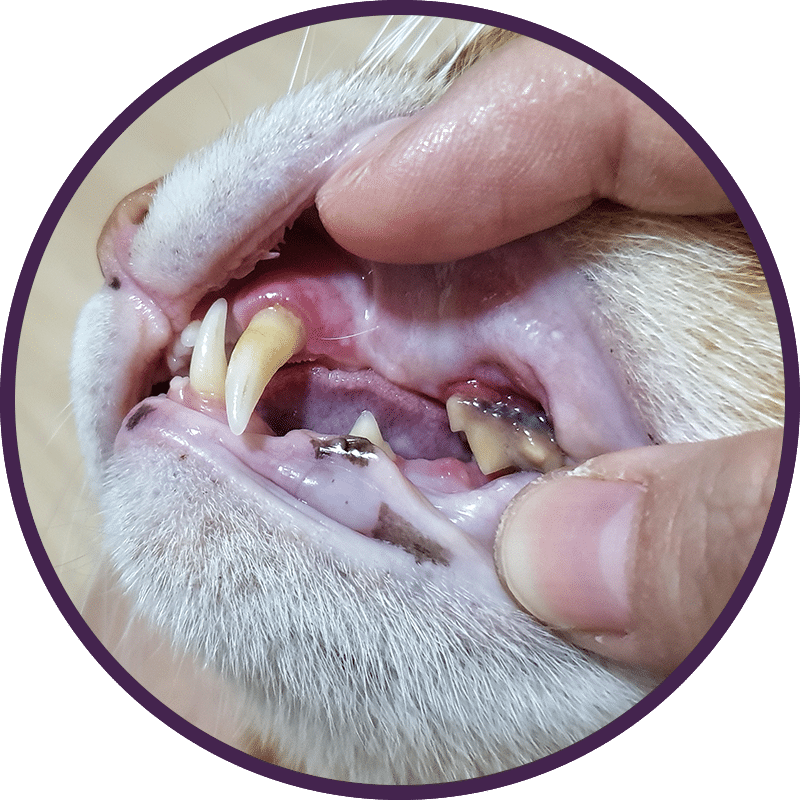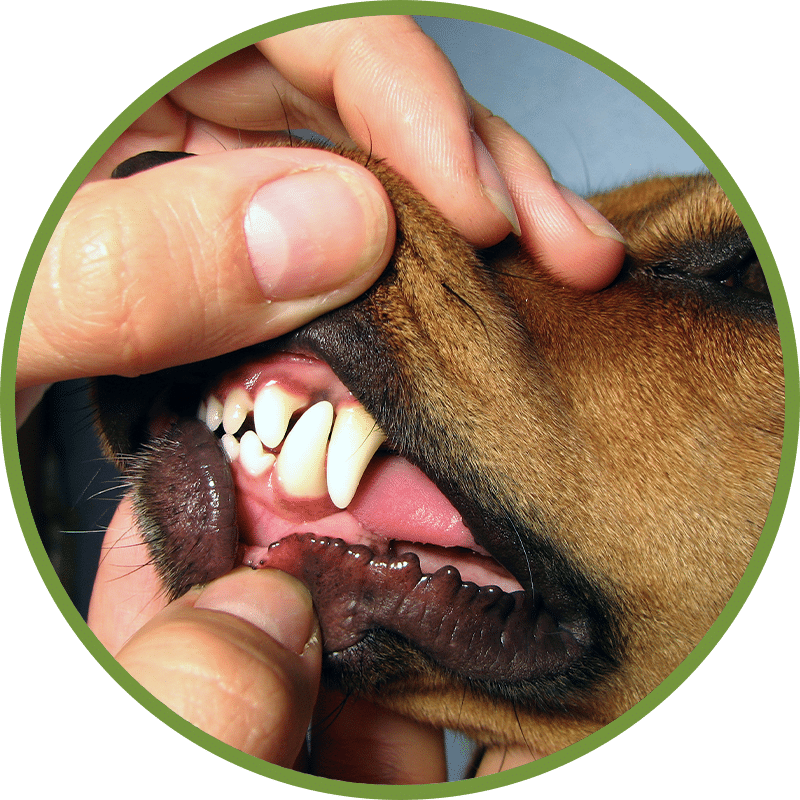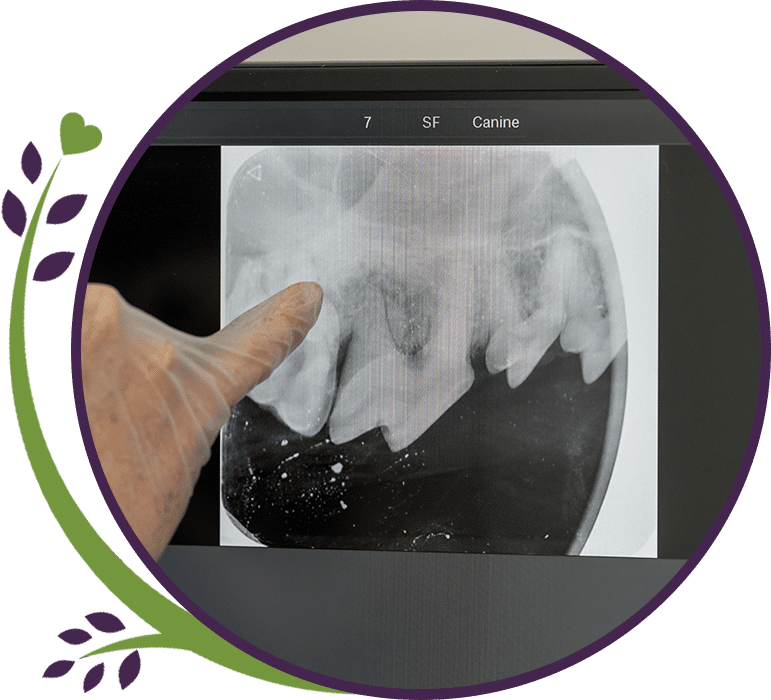
Pet dental care
Most pet dental disease occurs below the gum line, where you can’t see it. Your pet’s teeth and gums should be checked at least once a year by your veterinarian.
Schedule a dental exam
If you observe any problems with your pet’s mouth, such as broken teeth, pain, or difficulty when eating.
Dental cleaning
Includes scaling (to remove plaque and tartar) and polishing, similar to the process used on your own teeth during cleanings.
Anesthesia
Makes it possible to perform dental procedures with less stress, pain, and risk of injury for your pet. It also lets your veterinarian
do a full exam below the gum line, where most oral disease occurs.
Regularly brushing
Your pet’s teeth is the single most effective thing you can do to keep their teeth healthy between dental cleanings. It may reduce the frequency or even eliminate the need for periodic dental cleaning by your veterinarian.
Talk with your veterinarian
About any dental products, treats, or dental-specific diets you’re considering for your pet, or ask your veterinarian for their recommendation. Your veterinarian also can teach you how to brush your pet’s teeth.
Dental Radiographs
Many dental problems in cats and dogs occur beneath the gumline, where they cannot be seen during an exam.
For more information visit: AVMA.org/PetDental

Dental Cleanings
Our dental procedures include:
- Full dental assessment
- Dental cleaning and polishing to remove plaque and tartar
- Dental radiographs to evaluate tooth roots and bone health
- Surgical extractions when necessary (all extractions include nerve blocks to keep your pet comfortable)


Surgery Scheduling
Before your pet’s surgery, we schedule a Pre-Op appointment. At this visit, you will:
- Bring your pet for a Pre-Surgical Exam to make sure they are healthy enough for anesthesia
- Complete Pre-Surgical Lab Work to check organ function, blood counts, and overall health
- Sign the necessary surgical and anesthesia consent forms
- Pick up medications that need to be given before surgery
- Reduce anxiety and stress
- Prevent nausea
- Provide better pain control
- Improve your pet’s overall comfort and safety during and after their procedure

Why We Do Dental Radiographs
Dental radiographs are a crucial part of comprehensive veterinary dental care. Many dental problems in cats and dogs occur beneath the gumline, where they cannot be seen during an exam. Radiographs allow us to detect issues such as:
- Root fractures
- Abscesses or infections
- Painful resorptive lesions in cats
- Provide timely treatment
- Prevent infection from spreading
- Perform safer, more precise extractions when needed


